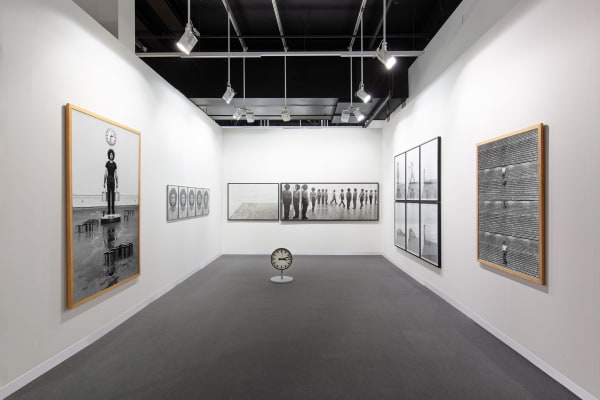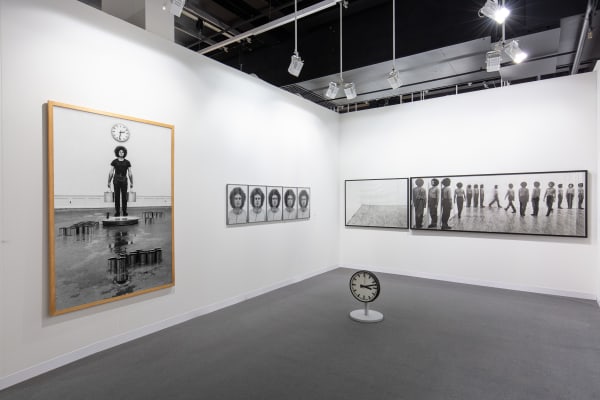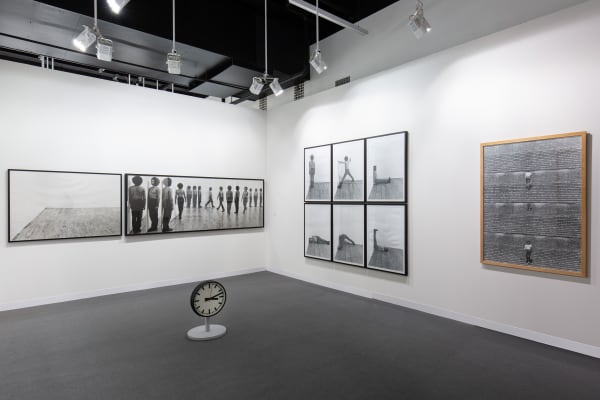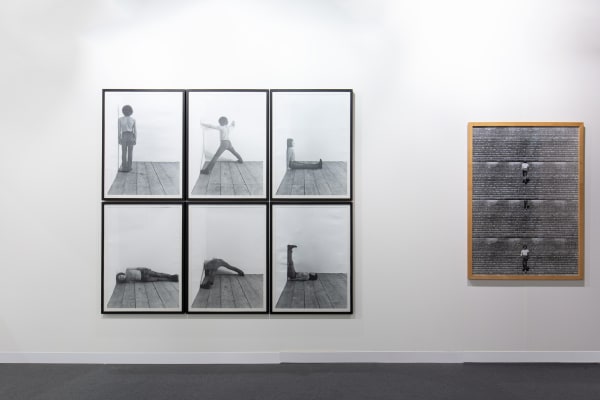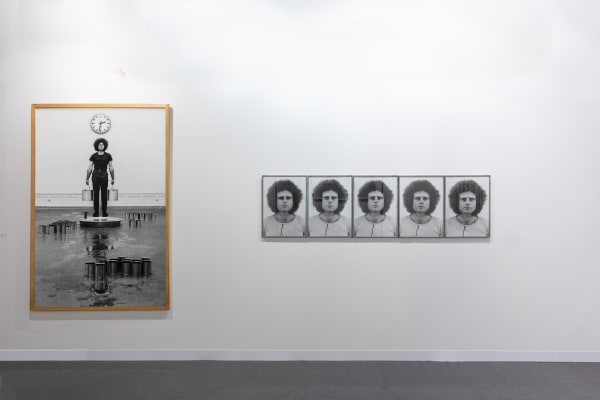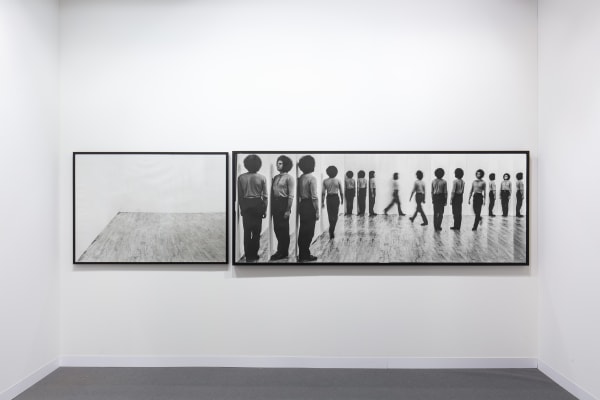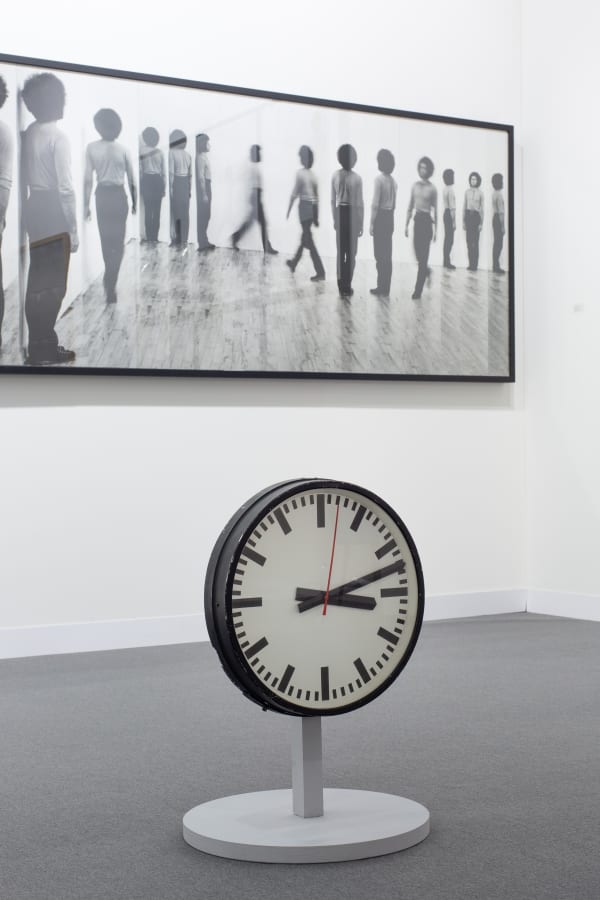ART BASEL
Feature Booth D08
KLAUS RINKE solo show
Klaus Rinke (b. 1939) is a universal artist who cannot be considered from a one-dimensional standpoint. Rinke is a draughtsman, painter, sculptor, photographer, philosopher and an artist of aqueous mediums and landscapes, of the human body, action painter, an artist of words, concepts, and philosophy. Since the 1960's he has played, indeed, an important part in the international art scene. His work is integral to the radical artistic movements that emerged during that period, which include Performance Art, Body Art, Land Art, Conceptual Art, Process Art and Action Art. Rinke is credited with creating the renowned "Düsseldorf Scene" and the Düsseldorf Academy of Art, where he lectured thirty years. In 1968 he conceived the idea of uniting some young Düsseldorf artists for an exhibition at the Kunst Museum Lucerne along with art historian Jean Christophe Ammann. The show was titled "The Düsseldorf Scene" and the artists featured in the show included Joseph Beuys, Jorg Immendorf, Imi Knoebel, Blinky Palermo, Sigmar Polke, Gerhard Richter and Klaus Rinke.
In late Sixties, Rinke abandoned painting for sculpture to work in three dimensions, then, moved from sculpture to photography using his own body as a central element. This "physical" experience of space also involved the recognition of the fourth dimension, time. From 1969, body, space and time become the major subject and interest of Rinke's oeuvre. On his show at MoMA in 1973, the artist said: "with the incorporation of time, Art was transformed into a process. I choose the body and the gesture of the body as a dematerialized, and most intelligible medium, to create an ABC of seeing and experiencing, and with this of human being in general".
At the time, Rinke developed his first performances, titled "Primary Demonstrations", in which he explored the concepts of body, space and time and reproduced them in photographic sequences. In these performances, Rinke's body is used as a "universal body": its possibilities and its limits, linked to the space and time, are tested to the extreme in both internal and external spaces such as galleries, museums, or nature. To accompany the movements of his body, Rinke often employed railway clocks since he was inspired by station clocks from his early childhood. He grew up near a railway station and both of his father, grandfather and great grandfather were railway men. Rinke's research on the concepts of "duration" and "impermanence" found their echo in what the French philosopher Henri Bergson called "Duration" or "Dauer": in terms of human experience "the here and now" is only a fleeting instant that is only generated through the power of human perception. Therefore, the present is a combination of physical "Time", that goes on even when we are not there, and the human perception of "Time". The German railway clock had, indeed, both a deep biographical and philosophical significance and it has become the leitmotif in Rinke's expression: references can be found in all the artist's production, from paintings to sculptures and photographs. The photographs demonstrate the meticulous almost scientific research of the artist and contributed to create a repertory of strict yet refine visual language that brings gestures, shapes, forms, and primordial energies together as one. Rather than record or aestheticize nature and the modern human condition, as did many of the great photographers during the earlier part of the century, Rinke's photographs become evidence which document a new conceptual, but also rational and scientific, approach to photography.
Rinke's exploration of "duration" and impermanence through the dynamic interplay of body, performances, clocks, water etc. transcends conventional artistic boundaries. His conceptual approach not only serves as a nuanced representation of temporal concepts but also invites contemplation on broader themes such as time, life, environmental responsibility, and the delicate balance of our planet's resources. Rinke's artistic journey becomes a compelling narrative that intertwines aesthetics, philosophy, and environmental activism, offering viewers a multifaceted experience that goes beyond the confines of traditional artistic expression.
[1] Press release of Klaus Rinke show at MoMA Museum, 1973, p. 2.
[2] Klaus Rinke: K.R. 1939 MEZ, In IN VIVO 01/2015, Centre Pompidou, Paris, France.
[3] Accessed online: https://www.moma.org/calendar/exhibitions/2534
[4] Press release of Klaus Rinke show at MoMA Museum, 1973, p. 2.
